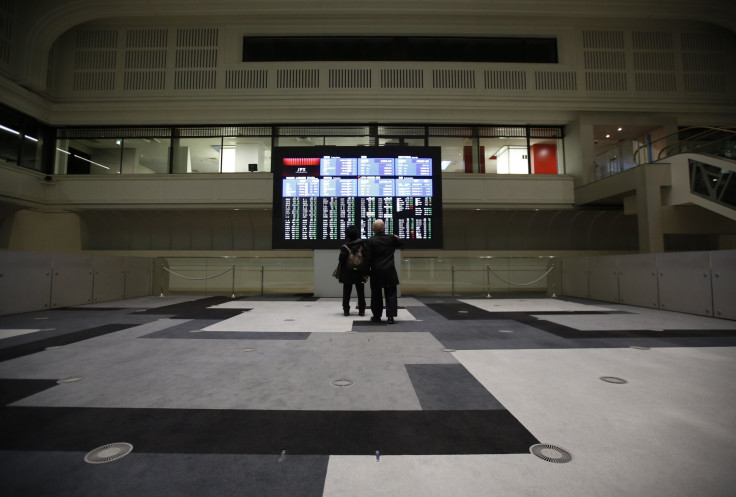Asia Shares Start Week On The Back Foot, Dollar Nurses Losses

Asian stocks got off to a tentative start on Monday as Japanese markets wobbled, while the dollar nursed losses after a week in which it slipped to fresh lows against its major counterparts.
MSCI's broadest index of Asia-Pacific shares outside Japan .MIAPJ0000PUS was a few ticks lower, after Wall Street ended with modest gains on Friday even as the S&P 500.SPX still suffered its biggest weekly decline in two months.
Japan's Nikkei stock index .N225 skidded 1.2 percent in early trading.
Data released early on Monday showed Japan's core machinery orders fell 9.2 percent in February from the previous month, in a sign that business investment remains subdued.
The dollar wallowed close to lows notched last week, as investors mulled the outlook for U.S. monetary policy, with the Federal Reserve seen as being more cautious on hiking interest rates than some investors had believed.
The dollar index, which tracks the U.S. unit against a basket of six major currencies, fell 0.1 percent to 94.187 .DXY, within sight of last week's low of 94.015, which was its lowest since October.
The euro EUR= was steady at $1.1403, not far from last week's high of $1.1454, its highest since October.
The dollar edged up slightly to 108.13 yen JPY=, holding above last week's low of 107.67, which was its weakest since October 2014.
The greenback's recent slide against its Japanese counterpart prompted a chorus of warnings from officials in Tokyo and put investors on alert for direct yen-selling intervention, though many believed Japan would stay its intervention hand.
"There have been a few weekly downdrafts of the dollar that were larger, without sparking an intervention," Marc Chandler, global head of currency strategy at Brown Brothers Harriman in New York, said in a note.
There is also some preliminary sign that seasonality is partly behind the yen's rise. Over the past 11 years, the dollar has fallen in April seven times, including four of the past five.
Crude oil prices rose after soaring more than 6 percent on Friday to post gains of about 8 percent for the week, as drawdowns in U.S. crude stockpiles fed hopes that the end was in sight for the global supply glut that has plagued the industry for nearly two years.
U.S. crude futures CLc1 added 1.1 percent to $40.16 a barrel after jumping 6.6 percent on Friday, while Brent crude LCOc1 was up about 0.8 percent at $42.29, after settling up 6.4 percent.
© Copyright Thomson Reuters 2024. All rights reserved.




















